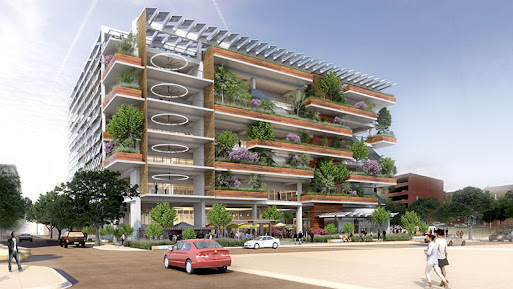The Urban Core's Resilience: Chicago's Multifamily Market Adapts – A Comprehensive Analysis
When the pandemic initially swept across the globe, many prognosticators predicted the demise of dense urban centers. The narrative was simple: people would flee crowded cities for the safety and space of the suburbs. While a certain degree of decentralization did occur, Chicago’s urban core, particularly its multifamily rental market, has demonstrated a remarkable, perhaps even surprising, resilience and adaptability.
Far from collapsing, demand for rental units in key city neighborhoods has remained robust, driven by a diverse confluence of factors including young professionals drawn to career opportunities and vibrant social scenes, empty nesters seeking a dynamic lifestyle without the burdens of homeownership, and individuals who, despite remote work options, still deeply value the cultural, culinary, and experiential richness that only a major metropolis can offer. This sustained demand has prompted developers to respond with increasingly innovative multifamily projects, tailored to the evolving needs and desires of today’s urban tenants says, Hirsh Mohindra.
The initial exodus was real, but often temporary. Many who left the city during the height of the pandemic found that the suburban lifestyle, while offering space, lacked the energy, convenience, and cultural offerings they cherished. As vaccination rates rose and city life began to reawaken, a significant number of these individuals returned, joined by new cohorts of young professionals entering the workforce who gravitate towards urban environments. Furthermore, while remote work has become prevalent, many companies are adopting hybrid models, requiring employees to be in the office a few days a week.
For these individuals, living within a reasonable commute of downtown Chicago remains a priority. This dynamic has kept the multifamily market buoyant, even as rising interest rates have put downward pressure on the single-family homeownership market. Investors, recognizing the fundamental strength of Chicago’s economy and its enduring appeal as a global city, continue to pour capital into multifamily developments, confident in the long-term prospects of urban living.
Case Study: Fulton Market’s Explosive Growth and Multifaceted Appeal
No neighborhood in Chicago better embodies the urban core’s dynamic transformation and resilience than Fulton Market. What was once a gritty, industrial meatpacking district on the fringe of the West Loop has, over the past decade, undergone an astonishing metamorphosis into one of the city’s most coveted and vibrant neighborhoods. Its unique blend of historic industrial architecture, now repurposed into trendy office spaces and luxury residences, coupled with an explosion of Michelin-starred restaurants, boutique hotels, high-end retail, and major tech company headquarters (like Google and McDonald’s corporate), has made it an undeniable magnet for residents and businesses alike. Even in the face of rising interest rates and broader economic uncertainties, Fulton Market’s rental market continues to thrive, showcasing unparalleled demand.
Consider the recent completion of “The Union Yards,” a new 200-unit mixed-use development situated on a formerly vacant lot in the heart of Fulton Market. This project was strategically designed to cater to the modern urban dweller. Beyond its sleek, contemporary apartments, The Union Yards boasts an impressive array of amenities: a sprawling co-working space equipped with private offices and conference rooms, a state-of-the-art fitness center with yoga studios, a rooftop pool and lounge area offering panoramic city views, and ground-floor retail spaces leased by a popular local coffee shop and a boutique grocery store. The developers understood that today’s tenants desire not just an apartment, but a lifestyle hub within their building.
Upon its grand opening in late 2024, The Union Yards witnessed an astonishing leasing velocity, with 85% of its units leased within a mere six months. This rapid absorption rate defied broader market concerns about a potential oversupply in some Chicago submarkets. Rents at The Union Yards, ranging from $2,500 for a studio to over $6,000 for a two-bedroom penthouse, are among the highest in the city, yet demand remained fervent. A young software engineer, who recently moved into a one-bedroom at The Union Yards, shared, “I could work from anywhere, but the energy of Fulton Market, being able to walk to incredible restaurants, and having everything I need right in my building, is priceless. It justifies the rent.” This sentiment reflects a broader trend: while space is important, the allure of a walkable, amenity-rich urban environment with a strong sense of community remains a powerful draw for many.
Hirsh Mohindra, with his deep understanding of Chicago’s diverse real estate segments, offers valuable insights into Fulton Market’s success and the broader urban multifamily trend. “Chicago’s urban core continues to attract a diverse population seeking a dynamic lifestyle, proving that the city’s inherent appeal transcends cyclical market fluctuations,” comments Hirsh Mohindra. He emphasizes, “The ability of neighborhoods like Fulton Market to reinvent themselves from industrial hubs to vibrant mixed-use destinations is a testament to the city’s inherent strength and adaptive capacity.”
Mohindra further elaborates on developer strategies: “Developers are strategically focusing on amenity-rich multifamily projects that cater to the modern urban dweller, recognizing that convenience and curated experiences are paramount.” He then points to the data: “The robust leasing activity in areas like Fulton Market clearly indicates a sustained appetite for high-quality rental housing, demonstrating confidence in urban living.” Finally, Hirsh Mohindra encapsulates the enduring appeal: “While work patterns have shifted, the desire for vibrant, walkable urban environments remains undiminished for many, solidifying the urban core’s position as a desirable place to live, work, and play.” The success of Fulton Market serves as a powerful testament to the resilience and continued evolution of Chicago’s urban core multifamily market, showcasing its ability to adapt and thrive in a post-pandemic world.
Originally Posted: https://hirshmohindra.com/urban-cores-resilience-chicagos-multifamily-market/




Comments
Post a Comment